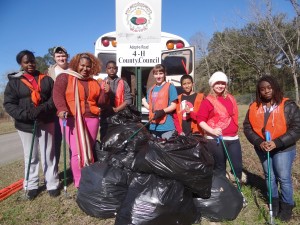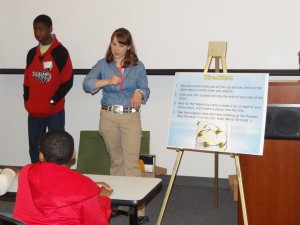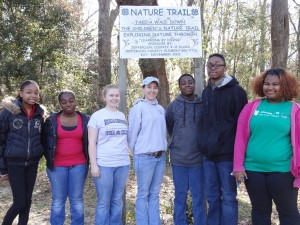Normal
0
false
false
false
EN-US
X-NONE
X-NONE
/* Style Definitions */
table.MsoNormalTable
{mso-style-name:”Table Normal”;
mso-tstyle-rowband-size:0;
mso-tstyle-colband-size:0;
mso-style-noshow:yes;
mso-style-priority:99;
mso-style-parent:””;
mso-padding-alt:0in 5.4pt 0in 5.4pt;
mso-para-margin-top:0in;
mso-para-margin-right:0in;
mso-para-margin-bottom:10.0pt;
mso-para-margin-left:0in;
line-height:115%;
mso-pagination:widow-orphan;
font-size:11.0pt;
font-family:”Calibri”,”sans-serif”;
mso-ascii-font-family:Calibri;
mso-ascii-theme-font:minor-latin;
mso-hansi-font-family:Calibri;
mso-hansi-theme-font:minor-latin;}
John G. Lilly
Jefferson County Extension Director/4-H Agent
Young people in 4-H are committed to improving their communities. Dr. Richard Lerner, and the team at the Institute for Applied Research in Youth Development at Tufts University highlights a notable trend. 4-H youth are three times more likely to actively contribute to their communities when compared with youth who do not participate in 4-H.
Making a Difference
A study showed that natural disasters and tragedies at schools in recent years have caused teens to worry and be more concerned about others. Yet at the same time, their goals for the future tend to be very encouraging. A common theme voiced by teens in the study was striving to “Make the Best Better.” 4-H teens believe that the key to “Making the Best Better” lies in looking beyond themselves and volunteering for causes they care about. Teens, even more than adults, love to feel they are making a difference and having an impact on their community. They also love to see the effects of their efforts.
Teens’ desire to give back covers a wide range of interests: “being good,” “giving back to the world,” “helping animals,” “doing community service”, being a leader,” “ending poverty and hunger”, “going to college”, and “curing cancer.” However, through giving back, teens also get something for themselves; experiences that help them gain new skills and develop empathy for others.
In Jefferson County, each year the 4-H teen council gives back to the community by participating in the following service projects: The 4-H adopt-a-road project, nursing home visits, the 4-H Nature Trail Clean-Up, Dr. Martin Luther King Holiday Neighborhood Clean-up, the Thanksgiving food basket giveaway, and 4-H District III Citrus Project.
Allison Cone, 17-year-old Jefferson County 4-H Teen Council Officer was asked why she volunteers. She stated, “I like to volunteer to make a difference in my community and to help those who are in need.”
Long-lasting benefits
Teens’ insights mirror recent research on volunteering. Community service not only benefits society, it enriches the lives of people who provide the service. Young volunteers have higher self-esteem, perform better in school, build leadership skills, and learn how to solve community problems better than their counterparts who do not volunteer. Research conducted by the Washington based coalition Independent Sector also shows that adults are twice as likely to volunteer if they participated in community service as teens.
Teens clearly need exposure to projects about social issues that help bridge their empathy, interest, and compassion into action. Yet this depends on the cognitive, social, and emotional stage of development. As teens mature, they learn to “set goals”, “motivate others”, and develop “critical thinking skills”. To keep youth engaged, volunteering needs to be fun and relevant to teens’ lives—two key reasons teens begin and continue to participate.
Teens: Ahead of the Curve
A national study conducted by the Corporation for National and Community Service in conjunction with the U.S. Census Bureau and Independent Sector demonstrated the high rates of teen volunteering in the United States. The study found that 55 percent of U.S. teenagers volunteered, a number nearly double that of adults. The study also found that the nation’s teenagers performed more than 1.3 billion hours of community service each year. Additionally, 74 percent of youth who volunteer do so through a religious organization or youth leadership organization such as 4-H.
With 4-H’s longstanding history and commitment to volunteering, our organization will continue to lead the way in promoting civic participation in new and innovative ways. The benefits have a ripple effect; reaped now, and in the future.
Young people in 4-H are committed to improving their communities. Dr. Richard Lerner, and the team at the Institute for Applied Research in Youth Development at Tufts University highlights a notable trend. 4-H youth are three times more likely to actively contribute to their communities when compared with youth who do not participate in 4-H.



 0
0
